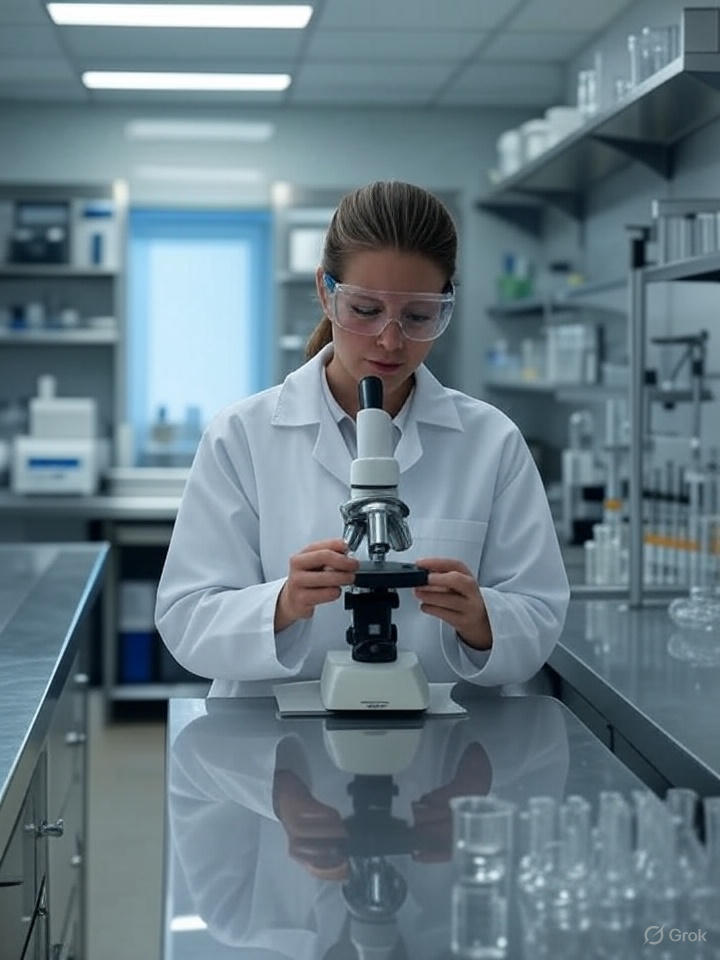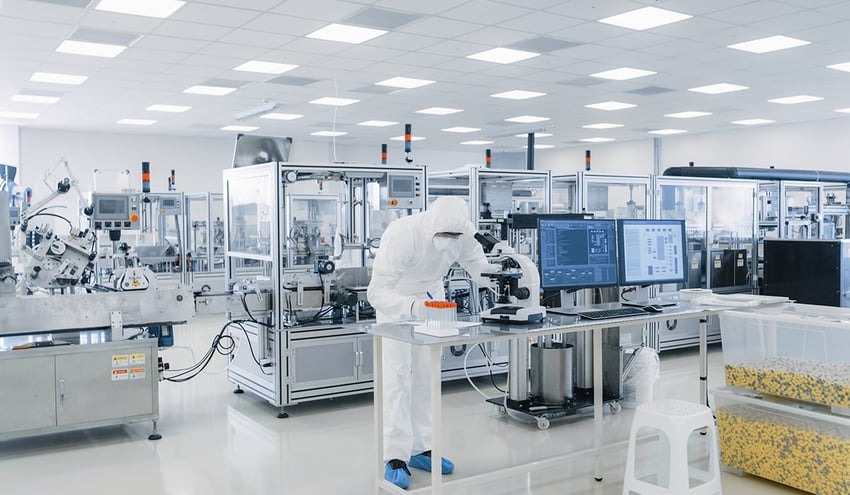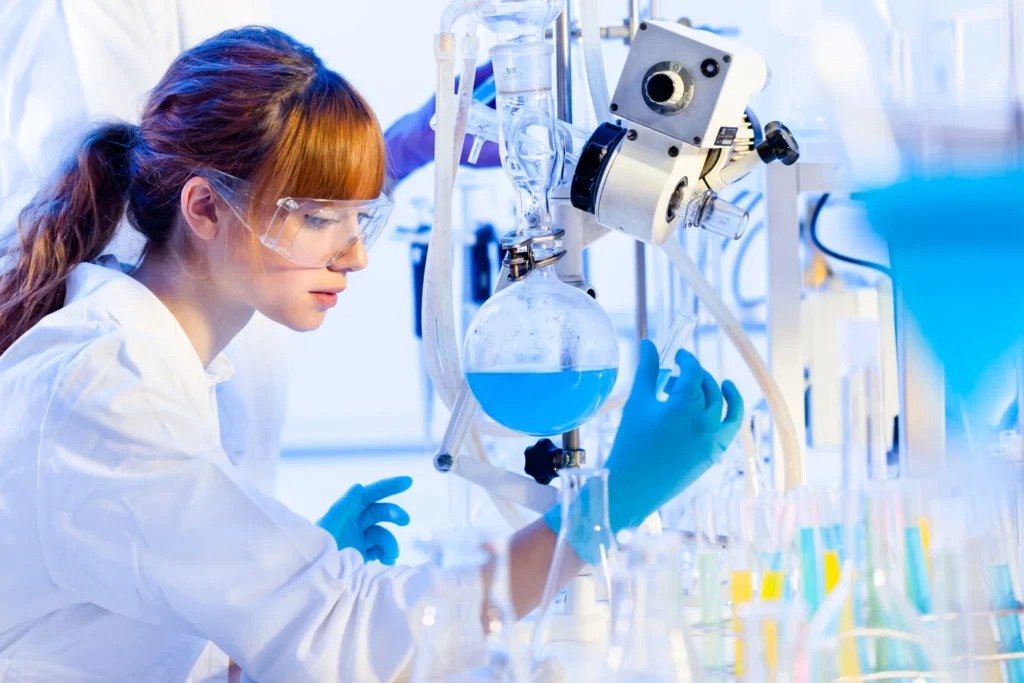The Definitive Guide for Professionals, Researchers, and Entrepreneurs
Introduction
A pharmacology laboratory is at the heart of drug discovery, medical research, clinical diagnostics, and industrial quality assurance. For professionals, researchers, and business owners, establishing a pharmacology lab is a strategic investment demanding meticulous planning, regulatory compliance, and a deep understanding of technology and market needs. This comprehensive guide covers every aspect of setting up a pharmacology lab—whether for medical, research, industrial, or educational purposes. Throughout, you’ll find SEO-friendly keywords such as pharmacology lab setup, pharmacology lab equipment, pharmacology laboratory business plan, and laboratory accreditation to enhance search visibility.

What is a Pharmacology Lab?
A pharmacology laboratory is a specialized facility where the effects, mechanisms, and safety of drugs and chemicals are studied using in vitro and in vivo methods. These labs are essential in hospitals, pharmaceutical companies, research institutes, regulatory agencies, and educational institutions. They support drug development, safety testing, pharmacokinetic and pharmacodynamic studies, and educational training.
Key Functions of a Pharmacology Laboratory
- Drug Discovery & Development: Screening new compounds for therapeutic potential.
- Toxicology & Safety Testing: Assessing adverse effects and safe dosage ranges.
- Pharmacokinetics & Pharmacodynamics: Studying absorption, distribution, metabolism, and excretion (ADME) of drugs.
- Bioassay & Quantification: Measuring drug concentrations and biological responses.
- Quality Control: Ensuring product safety and efficacy in pharmaceuticals and related industries.
- Education: Training students and professionals in experimental pharmacology.
Planning Your Pharmacology Lab
1. Define Your Lab’s Purpose
- Medical/Clinical: Focus on therapeutic drug monitoring, adverse drug reaction studies, and clinical trials.
- Research: Emphasize drug screening, mechanism studies, and animal/human tissue experimentation.
- Industrial/Quality Control: Prioritize batch testing, stability studies, and regulatory compliance.
- Educational: Support practical training, demonstrations, and curriculum requirements.
2. Market Analysis and Business Plan
- Target Market: Hospitals, pharmaceutical companies, academic institutions, research organizations, and industrial partners.
- Competitive Analysis: Assess local and regional competitors, their services, and pricing.
- Regulatory Landscape: Understand licensing, accreditation, and compliance requirements (e.g., NABL, ISO, GLP).
- Financial Projections: Estimate startup costs, operational expenses, and revenue streams.
- Business Model: Define your service offerings, pricing strategy, and value proposition.
Facility and Infrastructure
Location and Space Planning
- Accessibility: Choose a site with easy access for clients, sample logistics, and regulatory inspections.
- Space Allocation: Separate zones for animal handling (if applicable), wet lab, dry lab, analytical instruments, storage, and waste disposal.
- Utilities: Ensure reliable water supply, drainage, electricity (with backup), HVAC, and ventilation.
- Sanitation: Use materials for walls, ceilings, and floors that are easy to clean and resistant to chemicals and biohazards.
- Security: Restrict access to authorized personnel only.
Essential Equipment and Instruments
A well-equipped pharmacology lab should have the following core instruments:
| Equipment | Purpose/Function |
|---|---|
| Organ Bath (Student’s/Dale’s) | Isolated tissue experiments, bioassays |
| Kymograph/Physiograph | Recording physiological responses |
| Analytical Balance | Precise weighing of samples and reagents |
| Spectrophotometer | Quantitative analysis of drug concentrations |
| Centrifuge | Sample separation |
| pH Meter | Measures acidity/alkalinity of solutions |
| Incubator | Maintains optimal temperature for cultures/reactions |
| Autoclave | Sterilizes equipment and media |
| Microscopes (light, inverted) | Visualizes cells and tissues |
| Plethysmograph | Measures volume changes in organs/tissues |
| Flame Photometer | Quantifies sodium, potassium, calcium in samples |
| Electro-convulsiometer | Tests anticonvulsant activity |
| Analgesiometer | Measures pain threshold in animals |
| Histamine Chamber | Assesses bronchoconstriction/relaxation |
| Actophotometer | Measures locomotor activity |
| Rota Rod Apparatus | Evaluates motor coordination |
| Water Bath | Maintains constant temperature for reactions |
| Magnetic Stirrer | Mixes solutions |
| Pipettes (manual/electronic) | Accurate liquid handling |
| Deep Freezer & Refrigerator | Stores reagents and biological samples |
| Data Acquisition System | Records and analyzes experimental data |
| Personal Protective Equipment (PPE) | Safety for lab personnel |
| Computers & Data Analysis Software | Data management and reporting |
This list should be tailored to your lab’s specific focus (clinical, research, industrial, or educational.
Laboratory Design and Workflow
Layout Considerations
- Reception and Accessioning Area: For sample registration and documentation.
- Animal House (if applicable): For housing and handling laboratory animals, compliant with ethical guidelines.
- Wet Lab: For chemical and biological experiments.
- Dry Lab: For data analysis, simulations, and reporting.
- Analytical Section: Houses major instruments and testing stations.
- Storage: For chemicals, reagents, and hazardous materials.
- Waste Management: Dedicated area for safe disposal of biohazardous and chemical waste.
Workflow Optimization
- Unidirectional Flow: Ensure samples move in one direction to minimize cross-contamination.
- Zoning: Separate clean and contaminated areas.
- Automation: Implement Laboratory Information Management Systems (LIMS) for tracking and reporting.
- Space Requirements: Plan for future expansion and evolving technologies.
Staffing and Training
Key Personnel
- Lab Director/Manager: Oversees operations, compliance, and quality assurance.
- Pharmacologists: Design and interpret experiments, supervise research.
- Medical Laboratory Technologists: Conduct routine and specialized analyses.
- Animal Technicians (if applicable): Handle animal care and experimental procedures.
- Technical Assistants: Support sample processing and equipment maintenance.
- Administrative Staff: Handle billing, logistics, and customer service.
Training and Competency
- Initial Training: On SOPs, equipment use, and safety protocols.
- Ongoing Education: Updates on new technologies, quality standards, and regulatory changes.
- Competency Assessment: Regular evaluation to ensure proficiency and compliance.
Safety and Quality Assurance
Safety Measures
- Personal Protective Equipment (PPE): Lab coats, gloves, goggles, and masks.
- Biosafety Cabinets: For handling infectious or hazardous materials.
- Chemical Safety: Proper storage, labeling, and handling of reagents.
- Fire Safety: Extinguishers, alarms, and emergency exits.
- Waste Disposal: Segregation and safe disposal of biological and chemical waste.
- Universal Precautions: Treat all specimens as potentially hazardous.
- Disinfection: Clean work areas before and after use with appropriate disinfectants.
- Emergency Procedures: Know the locations of eyewash stations, showers, and first aid kits.
Quality Control
- Internal QC: Regular calibration of instruments, use of control samples.
- External QC: Participation in proficiency testing programs.
- Documentation: Maintain detailed records of procedures, results, and incidents.
- Accreditation: Seek certification from recognized bodies (e.g., NABL, ISO 17043, GLP).
Common Pharmacology Lab Experiments and Tests
| Experiment/Test | Description | Application |
|---|---|---|
| Dose-Response Curve (DRC) | Measures tissue/organ response to drug | Drug potency, efficacy, antagonist studies |
| Bioassay of Drugs | Quantifies drug activity using biological systems | Standardization, quality control |
| Analgesic Activity | Evaluates pain-relieving effects | Drug screening, pain research |
| Anticonvulsant Testing | Assesses seizure prevention | CNS drug development |
| Anti-inflammatory Testing | Measures reduction of inflammation | Drug screening, safety studies |
| Antihistaminic Activity | Assesses bronchoconstriction/relaxation | Allergy, asthma research |
| Pharmacokinetic Studies | ADME profiling | Drug development, clinical trials |
| Toxicological Screening | Acute and chronic toxicity assessment | Drug safety, regulatory submissions |
| Behavioral Studies | Locomotor, anxiety, cognition tests | CNS drug research, neuropharmacology |
Regulatory Compliance and Accreditation
- Licensing: Obtain necessary licenses from local and national authorities (e.g., NABL, GLP, CPCSEA for animal use in India).
- Accreditation: Demonstrates adherence to international quality standards (ISO 17043, GLP, NABL).
- Quality Management System: Implement SOPs, equipment logs, and personnel records.
- Audit Readiness: Regular internal and external audits to ensure compliance.
- Data Security: Ensure research and clinical data are securely stored and privacy is maintained.
Budgeting and Financial Planning
Startup Costs
- Infrastructure: Renovation, utilities, and security.
- Equipment: Purchase, installation, and calibration.
- Consumables: Reagents, glassware, PPE, and disposables.
- Staffing: Salaries, training, and benefits.
- Licensing and Accreditation: Application fees and inspection costs.
Operational Expenses
- Reagent and Consumable Replenishment
- Equipment Maintenance and Service Contracts
- Utilities (Electricity, Water, Internet)
- Waste Disposal Services
- Insurance (Liability, Fire, Theft)
Revenue Streams
- Drug Screening and Testing Services
- Research Contracts and Grants
- Training and Educational Programs
- Consulting and Quality Assurance Services
Develop a detailed business plan with financial projections to attract investors and manage growth.
Marketing and Growth Strategies
- Digital Marketing: SEO-optimized website, social media, and online advertising.
- Partnerships: Collaborate with hospitals, clinics, pharmaceutical companies, and research organizations.
- Quality Differentiation: Emphasize accreditation, turnaround time, and advanced technology.
- Customer Service: Reliable reporting, transparent billing, and responsive support.
- Continuous Improvement: Invest in staff training, equipment upgrades, and new test offerings.
Trends and Innovations in Pharmacology
- Automation and Robotics: Increase throughput, reduce errors, and improve reproducibility.
- In Silico Pharmacology: Computer modeling and simulation for drug discovery.
- Digital Data Management: Integration of LIMS and data analytics.
- Ethical Alternatives: Use of virtual labs and simulation software to reduce animal use.
- Sustainable Practices: Green chemistry, energy-efficient equipment, and waste reduction.
Checklist for Setting Up a Pharmacology Lab
- Define lab purpose and scope
- Conduct market and competitor analysis
- Prepare a detailed business plan
- Secure funding and location
- Design lab layout and workflow
- Procure essential equipment and consumables
- Recruit and train qualified staff
- Implement safety and quality protocols
- Obtain necessary licenses and accreditations
- Launch marketing and outreach initiatives
Conclusion
Establishing a pharmacology laboratory is a complex but rewarding endeavor that blends science, business, and regulatory compliance. By following best practices in planning, infrastructure, equipment selection, staffing, safety, and quality assurance, you can build a lab that meets the needs of healthcare, research, industry, or education. Stay updated with technological advancements and regulatory changes to ensure your lab remains competitive and compliant.
Keywords Used
- pharmacology lab setup
- pharmacology lab equipment
- pharmacology laboratory business plan
- laboratory accreditation
- laboratory safety protocols
- pharmacology tests
- laboratory workflow
- laboratory quality control
- clinical diagnostics
- research laboratory
- laboratory automation
- laboratory compliance
- laboratory marketing strategies



